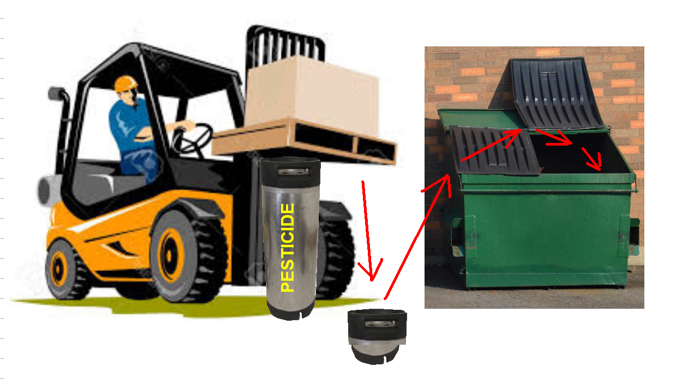I might have a unique point to speak from-- I make cleaning and sanitizing compounds, design surfactant systems, and collaborate regularly with people who make pesticides and toxicologists. A problem we recently worked on was cleaning trace herbicide from tanks so that the same tank could be used to kill weeds as well as to fertilize the crops, and it was a lot harder than you might think. So here are some items from my point of view...
1) Pesticides generally don't like water, but they like metal surfaces and they love rubber. You can replace gaskets, but removing them from the metal is going to take an intensive process (like steam with caustic... which will only work with some of them depending upon the chemical structure, and you'll want to passivate the kegs after that).
2) Beer has organic and solvent compounds that many pesticides will like enough to go join the party and dissolve into the beer, although it will be concentration dependent and plenty residue may remain on the wall of the keg to party with the next batch.
3) Even though there are plenty "n of 1" stories ("I drank a pint of Round Up and then lifted my tractor; I feel fine!") toxicity is based on the substance, the dose (small/large/repeated), and the consumer. And when it comes to things that interact with your body in a complicated way, the effects are generally delayed and additive.
Oh-- and I should mention that agricultural pesticides are formulated with a delivery package that is made to make them hard to get rid of. You want them to hang around on the leaves and stalks of plants even through rainstorms so that they keep killing the stuff you don't want.
TL;DR I'm not going to tell anyone what to do, but I wouldn't use the cornies until after I subjected them to a multi-step process (that would depend on what they had previously contained) with full disassembly. And I'd use a swab test after drying to be certain that no organic residue remained.
Rick













![Craft A Brew - Safale BE-256 Yeast - Fermentis - Belgian Ale Dry Yeast - For Belgian & Strong Ales - Ingredients for Home Brewing - Beer Making Supplies - [3 Pack]](https://m.media-amazon.com/images/I/51bcKEwQmWL._SL500_.jpg)












































